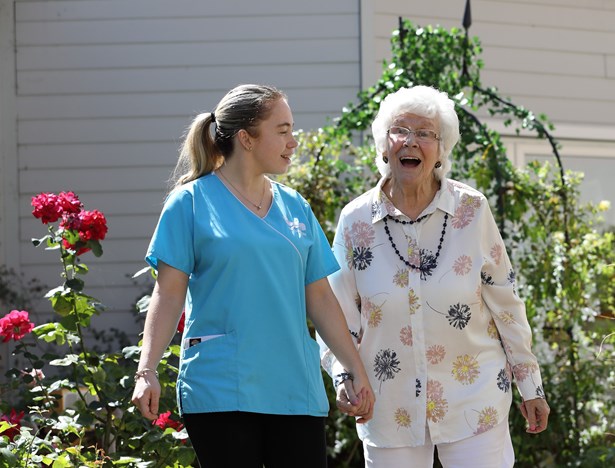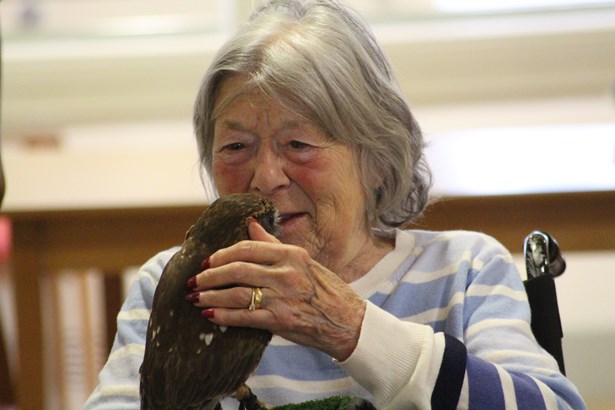At Lynwood Care Home, our five dementia care communities are designed around the Teepa Snow GEMS model, and our care teams are also trained in the Newcastle Model of Dementia Care. In this article we give a brief summary of each of these models and explain why they help us to provide our dementia residents with a better quality of life.

This GEMS model of dementia care prizes each individual and works with the cognitive abilities that are still intact, focusing on what people can still do, rather than mourning the abilities they have lost. There is no cure for dementia and the GEMS model focuses on making the most of each person’s life, taking a positive, optimistic approach.
Our carers, trained in the GEMS model, work with each person to figure out how to provide the appropriate care and support so they can ‘shine’. We identify what skills and capabilities each person still has and work with them to find ways to make their life fulfilling. By finding the gem in each individual, life with dementia can still have value and meaning.
Carers are trained to see each person as an individual; unique and precious – like a gem. And like gems they have different qualities. Teepa Snow’s GEMS model moves from sapphire to diamond, emerald, amber, ruby and finally pearl.

The ‘sapphire’ stage represents the healthy, normally-ageing brain; the person is able to communicate, understand and adapt to different environments but may sometimes struggle to find the right words and takes time to learn new things.
A ‘diamond’ may appear clear and bright but can be inflexible and possessive; this person may have reduced social awareness, can appear rude when distressed and may perceive help as a threat.
The ‘emerald’ is naturally flawed, will be focused on their own needs and wants while lacking awareness of safety. They may be unaware of changes in their abilities and often miss out words when speaking.
‘Amber’ gems are ‘caught in a moment in time’, may not recognise people, repeat simple tasks over and over again and, because of changes in the nervous system, may have extreme sensitivity in certain areas of the body, which can make personal care and eating challenging.
‘Ruby’ gems have limited fine motor skills and their balance, visual skills and co-ordination may also be poor. Their remaining capabilities may be hard to identify, so carers must anticipate and meet all of their needs.
All the ‘gems’ reflect the journey of dementia, finally reaching the ‘pearl’, when the person may be ‘locked inside an oyster shell’, unable to communicate and with deteriorating physical capabilities. Even if the pearl is hard to see, we never forget that the gem is still inside, and the person is still to be treasured and valued.
These gems and their behaviours will no doubt be familiar to people who have cared for loved ones with dementia.
The GEMS model also includes hands-on techniques that enable carers to provide care and support that prioritises the person, and the carer’s relationship with them. These techniques acknowledge that the brains of people with dementia work differently from healthy brains, enabling carers to engage with them slowly, carefully and in a way that reduces resistant behaviour, which can help improve nutrition, personal care and wellbeing.

Alongside the Teepa Snow GEMS model, the dementia care teams at Lynwood Care Home are also trained in the Newcastle Model of Dementia Care, which helps us to understand and manage some of the more challenging behaviours sometimes seen in people with dementia.
As dementia progresses, communication skills decline, which can lead to people being unable to explain what they need, for example if they are feeling unwell, are hungry or in pain. This unmet need can lead to challenging behaviour such as verbal or physical aggression, throwing objects or shouting, or non-aggressive behaviours such as making noises, asking repetitive questions, agitation or hoarding. The Newcastle Model provides a system through which we can observe and analyse the behaviour, helping us to identify if there is an unmet need, so we can take steps to resolve it.
For example, if we discover that they are anxious, we can take steps to make their environment more calming and soothing, using signs to help them navigate around the home and ensure that we explain what’s going on slowly and clearly. If they are bored, we can engage them in activities that they will enjoy, based on what we know of them from their life history, which we will have completed when they moved in. If they are angry, we can find out what’s causing their frustration, often rooted in a sense of being ‘wronged’ or an infringement of their, rights and resolve it. Sometimes people become agitated because they think they should be going to work or picking up their children from school, but this is because they have slipped into a different time frame; correcting them will simply cause more agitation, so we talk gently to them and ask them about their children, engage them in a soothing conversation until they feel calmer. Unless you have this kind of insight into dementia and its behaviours, it can be very difficult to manage.
The Newcastle Model gives us the tools to interpret and understand what’s going on for our residents with dementia, making life much better for them in the process.



